Where Have You Been?!
April 27, 2010 by Craig · Leave a Comment
Where have I been is a better question?! I’m so glad you asked…
In the “woodshed” man. Getting it done.
I’ve spent the better part of the last month or so turning this logo:
into this logo:
this masthead into:
this masthead:
this magazine (from cover to cover):
into this magazine:
and this website:
into this website:
I also had the “opportunity” to learn how to configure the site’s OSCommerce store! (Which actually turned out to be similar to other shopping carts and stores I’ve set up in the past, so it wasn’t too bad and overall I’m impressed with the features offered.)
As a whole, changing all of this stuff in a very short period of time turned out to be not as scary as I feared (had to happen quickly so there wasn’t a lot of time for fear!) and was a great opportunity to learn, expand my skill set and refine a lot of the things that I was dying to improve upon from the first couple of issues of Stunters Edge Magazine and the Stunters Edge website.
More detailed posts coming soon about various aspects of this redesign.
Thanks for reading!
Craig
New (Old) Items Added to Galleries
March 16, 2010 by Craig · Leave a Comment
I’ve been going through some archives looking for pieces that I thought turned out well or are some of my favorites.
Here are the new items added to the Graphic Design, Digital Illustration and Identity galleries:
(Just a hint… always take a few minutes to archive your projects as you go so you can find them later. I’m still looking for a lot of things I remember but can’t find. Bummer.)
Thank You CreativePublic.com!
March 1, 2010 by Craig · Leave a Comment
TinStarMedia.com was chosen as a “Designer of the Month” site for March 2010 by creativepublic.com! (Along with some other very nice sites.)
I’ve been a HUGE fan of Creative Public for a very long time. I just finally had a website to submit…
Creativepublic.com is a must-visit resource if you are a freelancer or a small business. I refer people to the site all the time when they have questions about setting up their business or pricing services. (The method I use came straight from Creative Public!) I highly recommend this site, props or not, it’s a great site with tons of useful information.
How to Combine Nashville and Sportbike Freestyle?
February 16, 2010 by admin · Leave a Comment
With Adobe Illustrator and Photoshop that’s how!
I posted up a new tip on my website Illustratortips.com last night. If you’re a graphic designer, or interested in using graphics programs, check out this post:
Cowboy Grunge – Illustrator/Photoshop Tip
Cowboy Grunge? I don’t know… I just made it up!
Graphic Design
January 14, 2010 by admin · Leave a Comment
With 10+ years of graphic design experience, you get the opportunity to do many, many different kinds of jobs, some you may never have even considered!
My specialty is publication design, but I also do brochures, business cards, very large format graphics, posters, concepts and anything in between.
Identity
January 14, 2010 by admin · Leave a Comment
No matter what you call it: logo, brand or identity; you only have one chance to make a good first impression and you can’t afford to get it wrong. Nothing says more about what you are all about. Your logo is the first (and possibly only) impression that a potential customer may ever get of you and you don’t want to be just another face in the crowd.
Whether you need to establish a new identity or refresh an old one, Tin Star Media’s mission is to help you make a great impression.
Digital Illustration
January 14, 2010 by admin · Leave a Comment
If you are looking for something truly unique, digital illustration is the way to go.
Digital illustration is more than simply manipulating a photo or allowing the computer to do all of the work, in fact, many of my illustrations start from the same place they did when I was a child. Pencil on paper.
Digital Illustration allows the freedom of combining mediums, programs, techniques and imagination and I would love to create a unique illustration especially for you!







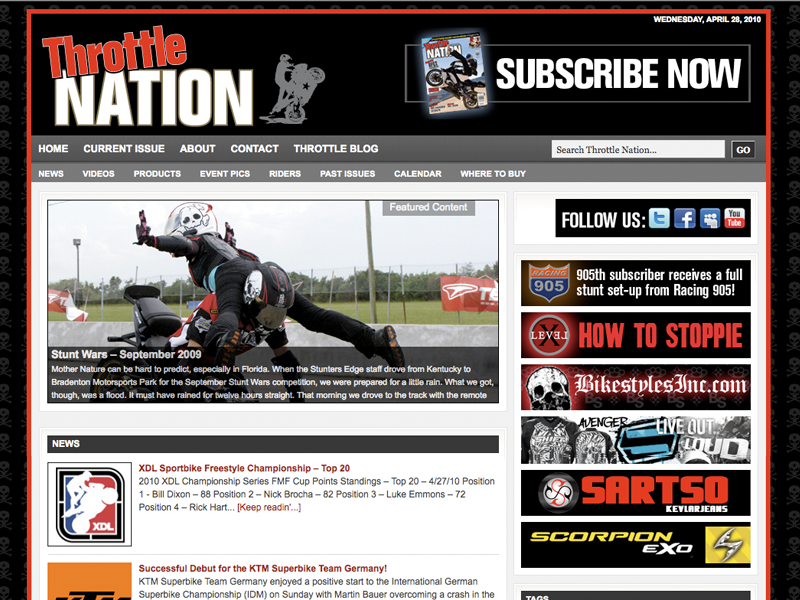


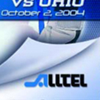












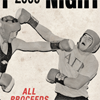







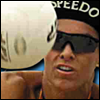












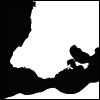
















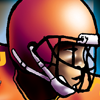








What Do You Mean You Can’t Make It Bigger?
March 1, 2010 by Craig · Leave a Comment
One of my goals with this blog is to speak to both designers and clients and attempt to address some of the problems that come up in the client/designer relationship.
One of the first and most common issues that comes to mind is the use of images. More specifically, the issue of what images the client has and what the designer wants and needs from the client.
Following are a few facts about digital images in layman’s terms. (And I’m not just talking to clients here either. I’ve worked with plenty of young designers who do not yet fully grasp the concepts.)
Images can be either Raster Based or Vector Based.
Raster based images are created using a grid of pixels to define the image. Each pixel is assigned a color value and all of the pixels together create the image. To increase the size of a raster based image, the pixels defining the image can be increased in either number or size. Increasing the number of pixels or making the pixels bigger in an image results in the original data being spread over a larger area. Spreading the pixels over a larger area causes the image to begin to lose detail and clarity as seen below.
You may notice if you look at the information on the file that the file is XX dpi. DPI means Dots Per Inch. Most printing is done at 300 dpi. Most web images are 72 dpi. (For all intents and purposes, 72 dpi is as small as you should go.)
Raster files handle the subtleties of photographs very well as a general rule and can be very large if there is a large amount of detail and pixels in an image.
Raster based images, as a general rule, are created in a program like Photoshop. Common file formats will be .jpg, .png, .gif, .psd, .eps and .tif
Vector based images, on the other hand, are created by using mathematical equations to define the shapes and points of the image. If the image is increased in size, the equation is recalculated accordingly resulting in the image increasing in size with no loss of data or detail. As a result, dpi is not a factor with vector based images. In theory, your image could cover a skyscraper without a loss of clarity or quality.
Vector files sound like the way to go then right?
Unfortunately, vector programs do not handle photographs as well as a general rule. Photographs are still raster based and it takes an extensive amount of time and effort (budget often becomes a factor here) to recreate a photo as a vector. (Though it can be done! Look at some of the people here.)
Vector based images are generally created in a vector program like Illustrator. Common file formats will be .ai, .pdf or .eps.
(For even more detail than you probably want to know, see this post: Vector vs. Raster.)
Now that we have that out of the way, what does this mean to you?
For clients:
This means that if you have an image that is a 3″ x 5″ .jpg at 300 dpi on your computer, you have a raster file. If you want this file to be an 11″ x 17″ poster, you’re most likely going to be out of luck no matter how talented your designer. As stated above, increasing the image more 10% or so (not big enough for your poster) spreads the pixels over a larger area and will result in a significant decrease in quality.
Expecting a designer to make something out of nothing will make your designer pull their hair out and might possibly put a lot of strain on the relationship.
Possible solutions / tips for clients:
BIGGER than what you need is almost always better.
If possible, obtain a larger image. It might be a little more expensive if you are are using a purchased image, but larger is almost always better. Think of the final size you want and shoot for that, or consult your designer before purchasing with your ideas for guidance. After all, that’s what you are paying him/her for right? Their expertise.
If you have the image you want printed somewhere, scanning the image might get you where you need to be. Quality might be a little less, but not nearly as bad as an image that is “blown up” too much.
See if your designer has any ideas of how they might “stylize” the image, like with a simple, but elegant, redraw in a vector program or maybe an artistic effect like a watercolor effect. Or, if the image is small but of a high quality, Illustrator’s Live Trace feature might be an option. Ask your designer.
Opening a raster based file in a vector program like Illustrator and then resaving does not make the file a vector file! It’s still just a raster file saved from a vector program.
Avoid sending your file attached in a program like Microsoft Word or Xcel if at all possible. Your designer will not be able to get much more than a low-resolution screen shot of your image.
Your logo is the most important piece of artwork you have. Strongly consider having your logo created first in a vector program. Creating your logo in a vector program makes your logo portable. Tiny for a website, or huge for a 20-foot banner, you’re covered. (Think classic and solid too. Those cool beveled edges and the sunburst in the middle with all the drop shadows may look kind of cheesy and dated in 20 years!)
For designers:
It’s easy to get frustrated. I’ve listened to frustrated designers yelling expletives and have come close to putting my head through my monitor a couple of times. And I’ve definitely yelled a few expletives.
But, always keep in mind that your client may have their hands tied. Maybe the tiny .jpg of their logo is all they have. Maybe the “corporate office” is not being responsive. Maybe the mom & pop client has no idea what you are talking about and barely knows how to use email and they are paying you to handle all that “stuff”.
Maybe they know what they have is junk and they are counting on you to make it wonderful.
If you do this job for any time at all, especially freelancing on the local level, you will encounter it all. If you have accepted the job, your task is to find a solution that works. If what a client has given you simply will not work, get creative and find a solution.
Lastly, don’t forget, you are a professional and you are being paid for your expertise. (Meaning, if the client knew all this stuff and knew how to do it themselves there would really be no need for your services.) If you are not being treated like a professional, that is another issue and one you should address.
Hopefully this post has brought to light a few of the issues that tend to come up in designer / client relationships and offered a few helpful tips. If you would like to add more, from either side of the fence, please add your two cents in the comments.
Photo by windchime
Filed under Tin Star Media Blog · Tagged with blog, clients, commentary, design, designers, illustrator, logos, photoshop, raster, vector